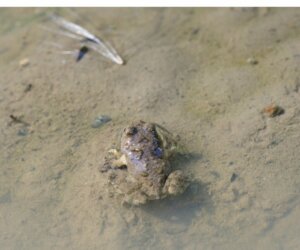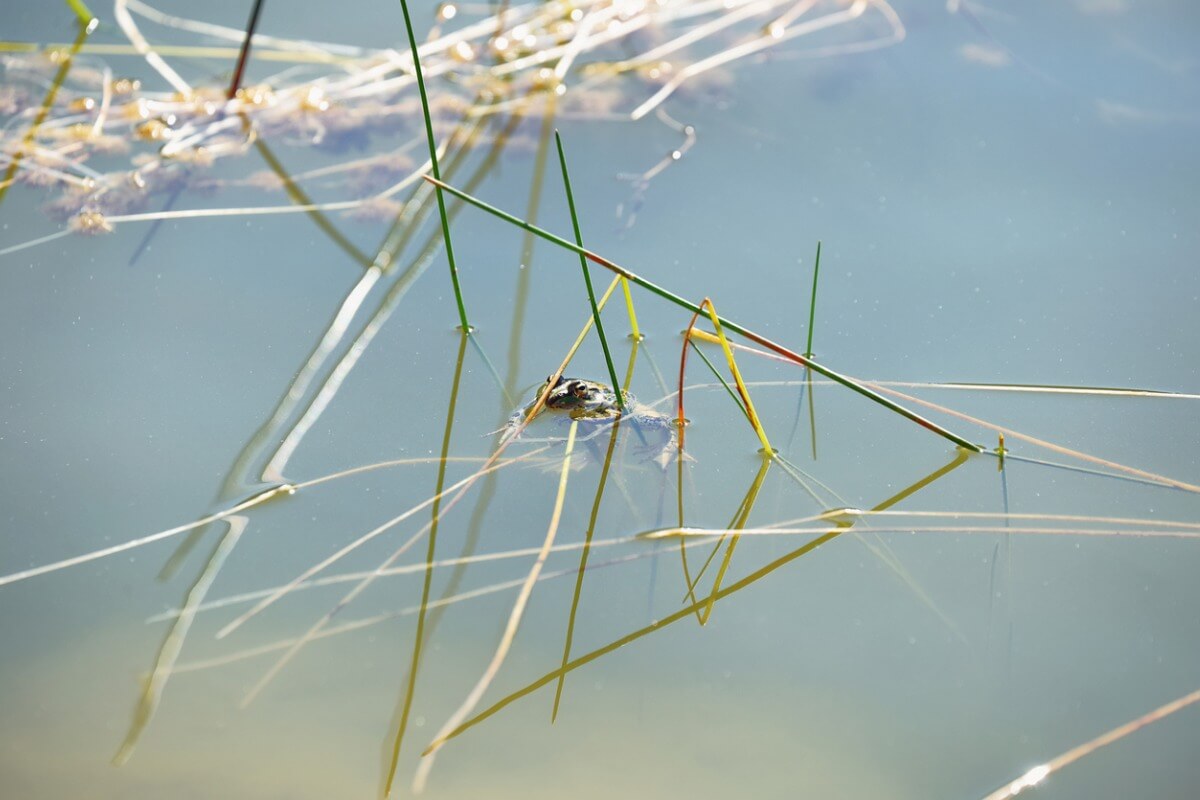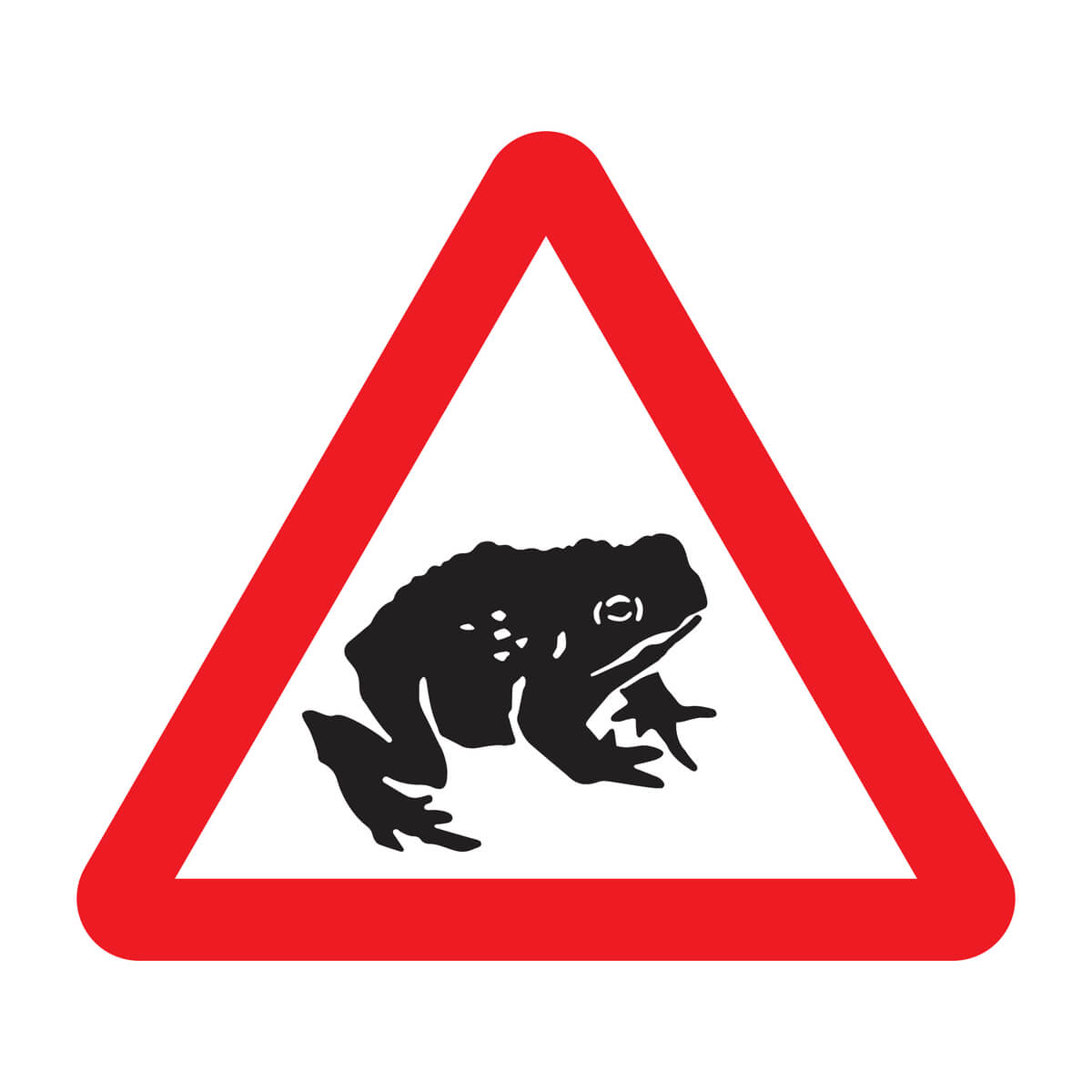Hall's Water Frog, a Rediscovered Species


Written and verified by the biologist Francisco Morata Carramolino
In the current biodiversity crisis, the extinction of species is an increasingly frequent phenomenon. Fortunately, not all living things that seem to be extinct really are. A few of them are discovered again through exhaustive searches, decades after their disappearance. This is the case with the Hall’s water frog.
This small amphibian hadn’t been seen since it was described by science, more than 80 years ago. A team of Chilean zoologists has announced its rediscovery in a recent article, published in the scientific review Zootaxa.
This is an opportunity as rare as it is valuable, which will allow researchers to learn more about the biology of this amphibian and establish measures to allow its conservation. In this article, we’ll tell you all about its discovery.
Hall’s water frog: characteristics
Hall’s water frog, whose scientific name is Telmatobius halli, is a small anuran amphibian. The body length in its adult form varies between 4.5 and 7 centimeters (2 to 3 inches), approximately.
The coloring of this animal is quite discreet. The dorsal part of the body and the extremities are olive-gray, while the ventral section is whitish with orange spots. The body surface is slightly rough, but lacks the large warts that characterize other anurans.
The head of the Hall’s water frog stands out for its large size. The eyes are located frontally, are very round and have fairly large circular pupils. Together with its giant mouth, this gives the animal a friendly and smiling look. The hind legs are slightly webbed.
In the larval stage, the tadpoles of this species measure between 16 and 17 centimeters (6 inches) in total length, although the tail occupies around 60% of this length. The body is ovoid in shape and the tail is flattened laterally.
The tadpole’s coloration is green and yellow, with small black dots almost all over the body. The belly is translucent, whitish and has gray spots. Through the dermal layer, the internal organs of the animal can be seen.

Ecology and habitat
At the moment, the Hall’s water frog’s way of life is largely unknown, as no individuals of the species have been observed since 1935. Although much remains to be discovered, the authors of this recent study, published in the scientific journal Zootaxa, point out some basic aspects regarding its ecology.
The few specimens found inhabit only Aguas Calientes, a small hot spring near Ollagüe, in Chile. So, it would have a distribution area of only about 105 square meters (350 feet).
The vegetation in this area consists of plants of the Verbenaceae family, such as Lampaya medicinalis and Acantholippia tarapacana. In the water, you can find reeds and other aquatic plants, under which the tadpoles take refuge. The adults, which are very aquatic, appear on the rocky shores of the spring.
Other animals have been detected in this place, such as spiny toads ( Rhinella spinulosa ) and fish of the genus Orestias. All of them share the characteristic of being eminently aquatic living beings
How was the Hall’s water frog found again?
To locate this elusive amphibian, the researchers used the article that originally described the species, as well as the chronicles written about the International High Altitude Expedition to Chile in 1935.
This expedition intended to study the physiological effects of altitude on the human body, but it was also responsible for the first scientific description of this animal, and relates the circumstances of this discovery.
The help of the local inhabitants was also essential, whose greater knowledge and close relationship with the local fauna is always essential in these cases. After several trips through the area, which led them to discover other species of amphibians, the researchers managed to find this frog in 2015.
The importance of this rediscovery
Hall’s water frog has been rediscovered, but it’s not all good news. Only 6 specimens of this species have been found, 3 adults and 3 tadpoles. Furthermore, its only location is very small, vulnerable and highly degraded.
Although they have survived to this day, it’s possible that these frogs are a microendemism, a species that only exists in that small part of the world, whose population is severely reduced.
The area is used for recreational and tourist purposes, which has greatly disturbed its ecosystem. The waters of the spring have been diverted to fill an artificial pool, which has been built next to the spring. There’s also a camping area, with covered picnic areas.
Besides tourism, other threats to the species are mining, agriculture and other activities that could alter or dry up the spring. Without this water the frogs cannot survive, as there are no other suitable places nearby for them.
Therefore, its rediscovery provides an exceptional opportunity to study the species and implement urgent conservation measures, before the species disappears from the planet.

At the moment, the scientific knowledge about this species is so poor that it’s considered to be “with insufficient data” by the International Union for Conservation of Nature (IUCN), but its classification could change to “critically endangered” after further research. It’s essential to conserve this small animal, which is unique on our planet.
In the current biodiversity crisis, the extinction of species is an increasingly frequent phenomenon. Fortunately, not all living things that seem to be extinct really are. A few of them are discovered again through exhaustive searches, decades after their disappearance. This is the case with the Hall’s water frog.
This small amphibian hadn’t been seen since it was described by science, more than 80 years ago. A team of Chilean zoologists has announced its rediscovery in a recent article, published in the scientific review Zootaxa.
This is an opportunity as rare as it is valuable, which will allow researchers to learn more about the biology of this amphibian and establish measures to allow its conservation. In this article, we’ll tell you all about its discovery.
Hall’s water frog: characteristics
Hall’s water frog, whose scientific name is Telmatobius halli, is a small anuran amphibian. The body length in its adult form varies between 4.5 and 7 centimeters (2 to 3 inches), approximately.
The coloring of this animal is quite discreet. The dorsal part of the body and the extremities are olive-gray, while the ventral section is whitish with orange spots. The body surface is slightly rough, but lacks the large warts that characterize other anurans.
The head of the Hall’s water frog stands out for its large size. The eyes are located frontally, are very round and have fairly large circular pupils. Together with its giant mouth, this gives the animal a friendly and smiling look. The hind legs are slightly webbed.
In the larval stage, the tadpoles of this species measure between 16 and 17 centimeters (6 inches) in total length, although the tail occupies around 60% of this length. The body is ovoid in shape and the tail is flattened laterally.
The tadpole’s coloration is green and yellow, with small black dots almost all over the body. The belly is translucent, whitish and has gray spots. Through the dermal layer, the internal organs of the animal can be seen.

Ecology and habitat
At the moment, the Hall’s water frog’s way of life is largely unknown, as no individuals of the species have been observed since 1935. Although much remains to be discovered, the authors of this recent study, published in the scientific journal Zootaxa, point out some basic aspects regarding its ecology.
The few specimens found inhabit only Aguas Calientes, a small hot spring near Ollagüe, in Chile. So, it would have a distribution area of only about 105 square meters (350 feet).
The vegetation in this area consists of plants of the Verbenaceae family, such as Lampaya medicinalis and Acantholippia tarapacana. In the water, you can find reeds and other aquatic plants, under which the tadpoles take refuge. The adults, which are very aquatic, appear on the rocky shores of the spring.
Other animals have been detected in this place, such as spiny toads ( Rhinella spinulosa ) and fish of the genus Orestias. All of them share the characteristic of being eminently aquatic living beings
How was the Hall’s water frog found again?
To locate this elusive amphibian, the researchers used the article that originally described the species, as well as the chronicles written about the International High Altitude Expedition to Chile in 1935.
This expedition intended to study the physiological effects of altitude on the human body, but it was also responsible for the first scientific description of this animal, and relates the circumstances of this discovery.
The help of the local inhabitants was also essential, whose greater knowledge and close relationship with the local fauna is always essential in these cases. After several trips through the area, which led them to discover other species of amphibians, the researchers managed to find this frog in 2015.
The importance of this rediscovery
Hall’s water frog has been rediscovered, but it’s not all good news. Only 6 specimens of this species have been found, 3 adults and 3 tadpoles. Furthermore, its only location is very small, vulnerable and highly degraded.
Although they have survived to this day, it’s possible that these frogs are a microendemism, a species that only exists in that small part of the world, whose population is severely reduced.
The area is used for recreational and tourist purposes, which has greatly disturbed its ecosystem. The waters of the spring have been diverted to fill an artificial pool, which has been built next to the spring. There’s also a camping area, with covered picnic areas.
Besides tourism, other threats to the species are mining, agriculture and other activities that could alter or dry up the spring. Without this water the frogs cannot survive, as there are no other suitable places nearby for them.
Therefore, its rediscovery provides an exceptional opportunity to study the species and implement urgent conservation measures, before the species disappears from the planet.

At the moment, the scientific knowledge about this species is so poor that it’s considered to be “with insufficient data” by the International Union for Conservation of Nature (IUCN), but its classification could change to “critically endangered” after further research. It’s essential to conserve this small animal, which is unique on our planet.
All cited sources were thoroughly reviewed by our team to ensure their quality, reliability, currency, and validity. The bibliography of this article was considered reliable and of academic or scientific accuracy.
- Cuevas, C. C., Formas, J. R., Alvarado-Rybak, M., Peñafiel-Ricaurte, A., & Azat, C. 2020. Rediscovery of the enigmatic Andean frog Telmatobius halli Noble (Anura: Telmatobiidae), re-description of the tadpole and comments on new adult’s characters, type locality and conservation status. Zootaxa, 4834: 195–206.
- https://laderasur.com/articulo/redescubren-enigmatica-rana-en-desierto-de-atacama-luego-de-80-anos-de-estar-perdida-para-la-ciencia/
This text is provided for informational purposes only and does not replace consultation with a professional. If in doubt, consult your specialist.








